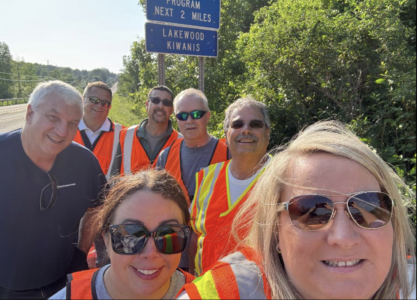Smart Meters Coming For Some County National Grid Customers
More than 4,100 Western New York customers of National Grid will soon be receiving smart meters.
Beginning in January, following deployment of more than 450,000 electric meters in central and eastern New York, 4,100 customers will receive new meters. The company’s initiative to replace meters nearing their end of lifespan with modern smart meters provides customers additional control and near real-time insights about their energy use.
“Smart meters are the foundation for modernizing the grid and delivering on evolving customer expectations and demands,” said Mike Mokey, National Grid’s director of advanced metering infrastructure. “Customers can choose how much to interact with their new smart meter as they enjoy benefits from the wide range of features, including detailed information about energy use, and the ability to have the meter instantly notify National Grid when there’s a service interruption at their home.”
Within the next two weeks, 4,100 National Grid customers in the following Western New York communities will receive a letter from the company with details about their upcoming smart meter installation:
• Erie County: Angola, Brant, Eden, Farnham, Hamburg
• Allegany County: Cuba, Scio, Wellsville
• Cattaraugus County: Allegany, Cattaraugus, East Otto, Franklinville, Limestone, Otto, Portville, Quaker Bridge
• Chautauqua County: Bemus Point, Chautauqua, Dewittville, Frewsburg, Irving, Jamestown, Little Valley, Maple Springs, Mayville, Ripley, Sinclairville, Westfield.
After the initial 4,100 Western New York customers receive their smart meters, the company will continue the gradual deployment in other parts of the region through 2027.
The smart meters that National Grid is installing are compliant with Federal Communications Commission regulations and emit less radio frequency than mobile phones, laptops, baby monitors or other devices. The meters will communicate wirelessly with National Grid’s control centers through a secure network. This encrypted data will help National Grid pinpoint locations of outages and whether the issue occurred on customer-owned equipment or on the company’s network.
Customers will receive information approximately 60 days in advance of when their meter is expected to be installed. Up until the installation date, National Grid will be in contact with customers via email, phone and postal mail. Installation dates with approximate times will be provided up to two weeks in advance. Customers do not need to be on site to meet installation crews if their meter is located outside of the home or business. Customers will have the ability to reschedule if their appointed date and time is inconvenient for them. Elderly, blind and disabled customers and customers with approved life-support devices will have the ability to set appointments for their meter installation.
Installation of the initial 4,100 meters will be completed by National Grid crews. Future installations will include contractors from Utility Partners of America, an industry leader in smart meter installation. Installers will be easily recognizable as employees of National Grid or UPA, who will wear photo identification that includes their name, company name and logo, with many traveling in branded vehicles.
Smart meter installation for electric customers requires a short power outage that should last only a few minutes to safely remove the old meter and install the new one.
To learn more about National Grid’s Advanced Metering Infrastructure program, nationalgridus.com/Smart-Meter.



